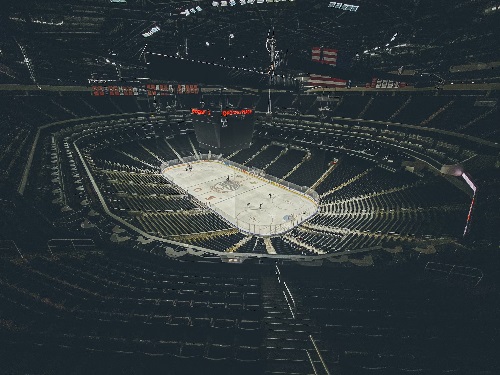Skating Towards the Big Paydays – NHL’s Next Big Contracts

As the ice sets for another thrilling NHL season, the buzz isn’t just about the games but also about the staggering contracts brewing on the horizon. With the league’s salary cap on an upward trajectory, some of the game’s brightest stars are poised to ink life-changing deals. Here’s a look at who might be signing those headline-grabbing contracts soon.
The Big Names
Alexis Lafreniere set the pace, securing a seven-year, $52.15 million contract with the New York Rangers following a breakout season. As teams look ahead, the focus shifts to players like Connor McDavid, Cale Makar, and Kirill Kaprizov, who are poised for potentially massive extensions when they become eligible in July 2025.
Goalie Watch: Igor Shesterkin
Igor Shesterkin’s negotiation saga is one of the most closely watched in the NHL. As the linchpin of the New York Rangers, Shesterkin’s rejection of an eight-year, $88 million contract proposal was a major headline. This deal would not only have made him the highest-paid goaltender in the history of the NHL but also set a new benchmark for all upcoming goalie contracts. However, Shesterkin is aiming higher, likely targeting a salary above $11.5 million annually.
His stellar performance, highlighted by a .926 save percentage and a 2.16 goals-against average — both ranking in the top five league-wide — makes a compelling case for such a substantial pay raise. The outcome of these negotiations could reset market expectations for elite goaltenders and add a new layer of financial strategy for teams managing their salary caps.
Marner’s Momentum
Mitch Marner’s contract negotiations are a pivotal narrative surrounding the Toronto Maple Leafs this season. Marner, known for his reticence regarding public discussions of his contract status, has been speaking volumes on the ice, leading his team in early-season scoring. His performance has been a boon for NHL best bets at platforms like FanDuel Sportsbook, where his impact on games can be a determining factor in wager outcomes.
Currently, Marner is navigating the complex financial landscape shaped by teammates like Auston Matthews, who earns $13.5 million annually, and William Nylander, with a yearly salary of $11.5 million. Expectations suggest Marner’s next deal could find a middle ground between these figures, which reflects his integral role on the team and his market value, naturally making him a key player to watch for both fans and sports bettors alike.
Rantanen’s Rocky Talks
Mikko Rantanen is at a crossroads in his career with the Colorado Avalanche. As a top-tier scorer, his contribution to the team is indisputable, yet contract talks have hit a standstill. Rantanen’s strategic approach to the 2024-25 season appears to be aimed at boosting his market value, potentially to secure a deal comparable to teammate Nathan MacKinnon’s eight-year, $100.8 million contract.
However, the Avalanche may have reservations about committing to such a hefty contract, given the broader implications for their salary cap management. Rantanen’s situation is a classic example of the tug-of-war between player aspirations and team fiscal strategy, highlighting the complex dynamics at play in NHL contract negotiations.
Emerging Stars and Steady Hands
The contract scenarios for Brock Nelson of the New York Islanders and Brock Boeser of the Vancouver Canucks are unfolding against very different backdrops but highlight similar challenges in player retention. Nelson, a model of consistency, has provided the Islanders with critical scoring depth, leading the team in goals over the past three seasons. His looming free agency puts pressure on the Islanders to secure his services long-term, especially considering his pivotal role and increasing productivity.
Meanwhile, Boeser is leveraging a strong start to the current season to enhance his bargaining position with the Canucks. After a career-best performance last year, he is on pace to set new personal records, making his contract extension a priority for Vancouver. Both players exemplify the integral role of foundational talent in sustaining competitive teams in the NHL.
Conclusion
With the salary cap expected to increase, the NHL finds itself at a juncture where financial prudence and competitive ambition must meet. The players listed are not just fighting for a spot in the playoffs but also securing their financial futures. As these negotiations unfold, they will not only redefine their lives but could also reshape the financial landscape of the entire league. For fans and teams alike, these contract talks are a game within the game, equally fraught with strategy and high stakes.



[…] publish Skating In direction of the Huge Paydays – NHL’s Subsequent Huge Contracts appeared first on Hooked On Hockey […]
[…] Skating mot store utbetalinger – NHLs neste store kontrakter dukket opp først Hooked On Hockey […]
[…] publish Skating In direction of the Massive Paydays – NHL’s Subsequent Massive Contracts appeared first on Hooked On Hockey […]
[…] Skating Menuju Pembayaran Besar – Kontrak Besar Berikutnya NHL muncul pertama kali pada Majalah Kecanduan […]
… [Trackback]
[…] Read More: hookedonhockeymagazine.com/skating-towards-the-big-paydays-nhls-next-big-contracts/ […]